af_the-star-ingredient
“You should cook it in our restaurant!” exclaims one of Jeanne Cimpaye’s five children appreciatively.
They’re seated at a table at her cosy home restaurant in the Burundian village of Ruhagarika near the border with the Democratic Republic of Congo and it’s their first time trying sorghum.
Just a couple of decades ago, this ancestral Burundian grain was a staple food but today it is almost entirely replaced by the rice and maize crops introduced by German and Belgian colonisers.
Jeanne is famous in the village for her impeke and ikiyama - the traditional Burundian sorghum beers, but sorghum dishes are rarely on the menu at her restaurant.
“Sorghum is expensive. And many people here are not too used to sorghum dishes. So if I cook it all the time, I will be losing money”, she explains.
“I’ve got to get them used to this new food step by step”.
Sorghum is not really a new food for Burundians, but it has been forgotten. But restaurant owners like Jeanne are committed to putting it back on the menu.
Symbol of royal power
The Burundian monarchy was preserved under European colonial rule and lasted up until 1966. And at the time sorghum was a staple food and one of the symbols of the royal family and wealth.
After harvest - the sorghum was stored in granaries to be distributed to the population during times of famine.
“It was a symbolic crop that legitimised the Burundian leadership”, explains Esperance Habindavyi, a sorghum expert at the Institute of Agronomic Sciences of Burundi.
“But nowadays, it is an important crop at the social level, especially in rural areas where sorghum beer is produced for weddings, parties, and many other social occasions”.
Burundians call ikiyama and impeke, sorghum beer. But it's quite different from European lagers.
Ikiyama is lighter, while Impeke is brown in colour and very dense. It’s a fermented drink that is acidic and bitter so some people like to soften it with honey.
During celebrations traditionally, guests gather around a big jar full of impeke and simultaneously dip their straws in the dense beverage to symbolise their unity.
In Burundi, sorghum is significant for another reason, explains Esperance. “It is one of the crops that can help improve food security”, she says.
Burundi is a landlocked country in East Africa. With a population of 12 million people, in 2021 it had the lowest GDP in the world per capita.
According to the World Food Program, 52 per cent of children under 5 have stunted growth and many people in rural communities experience malnutrition.
“Sorghum contributes a lot to reducing malnutrition among children and especially among women because it contains phosphorus and iron.
These elements play a major role in combating malnutrition in Burundi”, Esperance explains.
Make sorghum great again
Just like maize, sorghum is a tall grass with small kernels. The drought-resistant plant sprouts just three days after planting. However, not all varieties are equally efficient.
“We advise our accompanied communities to look for new short cycle varieties so that they can be harvested and consumed in just three months”, says Audace Ndikumana, director of programmes at Inades Formations Burundi.
Accompanied by the pan-African NGO, over 300 Burundian farmers in the provinces of Cibitoke and Kirundo are learning modern methods of sorghum production.
Since 2018, the production rates of sorghum among the farmers taking part in the programme have gone from 300 to 500 kilos per season per household.
Another part of the training to revive sorghum is to work with restaurant owners like Jeanne. In 2021 she took part in a seminar on the use of indigenous ingredients to preserve Burundian food culture and strengthen food security organised by Inades.
“We were taught how to prepare bean doughnuts, bean porridge and white sorghum. Inades encouraged us to cook these dishes in our restaurants”, she says.
“These seminars opened my eyes and encouraged me to continue cooking sorghum. It also showed me the importance of growing and processing it. I am convinced that I cannot stop making impeke because this drink is valuable and important to Burundian culture”.
Impeke and ikiyama
Ingredients
For the fermented base:
Sorghum flour - 1 kg
Corn flour - 80 gr
Cassava flour - 500 gr
Water
For ikiyama:
Honey, sugar or any other sweetener of choice
For impeke:
Beer
Method for the base
Roast maize flour on a dry hot pan until golden brown.
Mix with the sorghum flour.
Add 100 mg of boiling water and mix well.
Add the cassava flour and more boiling water.
Mix well.
Add water until the whole mixture takes the form of a mush.
Spread a small amount of sorghum flour on top, cover well and put in a warm place for 48 hours for fermentation.
This is the base for both impeke and ikiyama.
For impeke
Impeke is more concentrated than ikiyama.
Take the basis prepared earlier and add some boiling water until it takes the form of a highly concentrated drink.
Mix well.
To make impeke alcoholic, add a bottle of any beer available to you.
Pour it into a clean container and close the lead.
Store overnight in a warm place to facilitate fermentation.
For ikiyama
Ikiyama is more liquidy, so add twice as much water as you do for impeke.
Add sugar or other sweetener to taste.
Bon appetit!
If you’re hungry for more recipes and stories around indigenous African ingredients, listen to the first episode of our series where we spoke to Pierre Thiam about the cherished food of his childhood, fonio.
This show exists in French: La surprise du chef.
The podcast The Star Ingredient was funded by the European Journalism Centre, through the Solutions Journalism Accelerator. This fund is supported by the Bill & Melinda Gates Foundation.



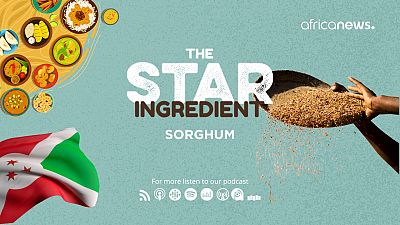







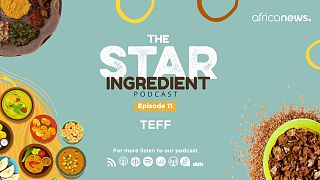

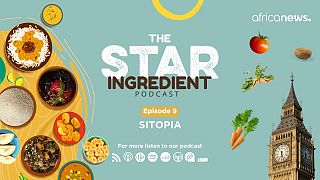
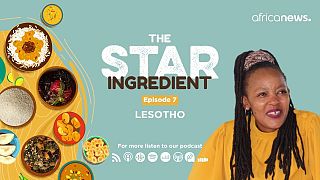
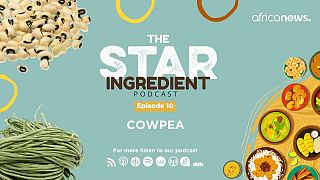



Go to video
Grand funerals of the Bôbô: Honoring the dead and celebrating unity
Go to video
Exhibition in Morocco explores a world of color
Go to video
Discover Cape Verde’s vibrant music scene at the Atlantic Music Expo
Go to video
Pics of the day: March 26, 2025
01:15
Burundi accuses Rwanda of plotting attack
Go to video
Morocco: How traditional clothing enhances the Eid festivities